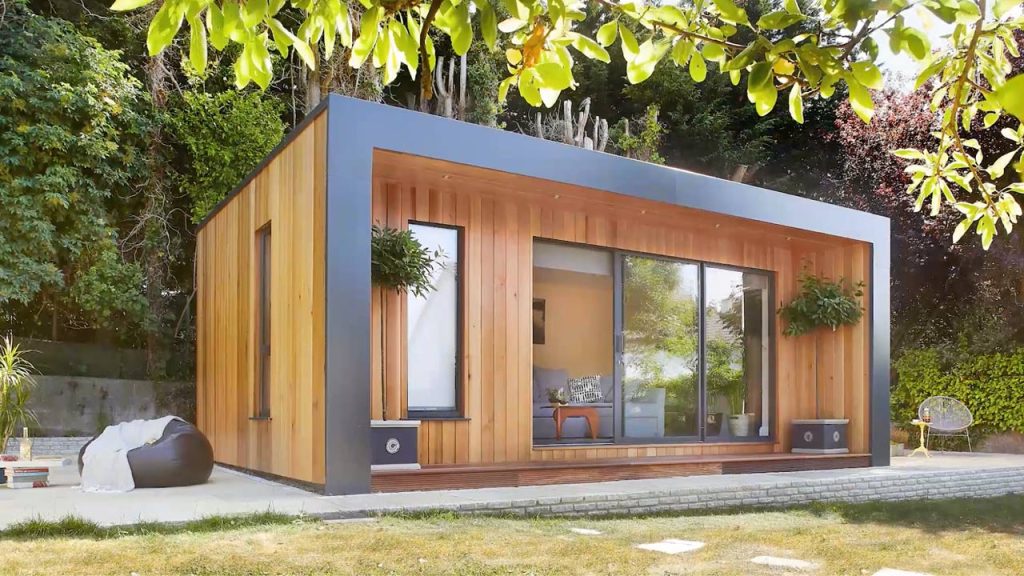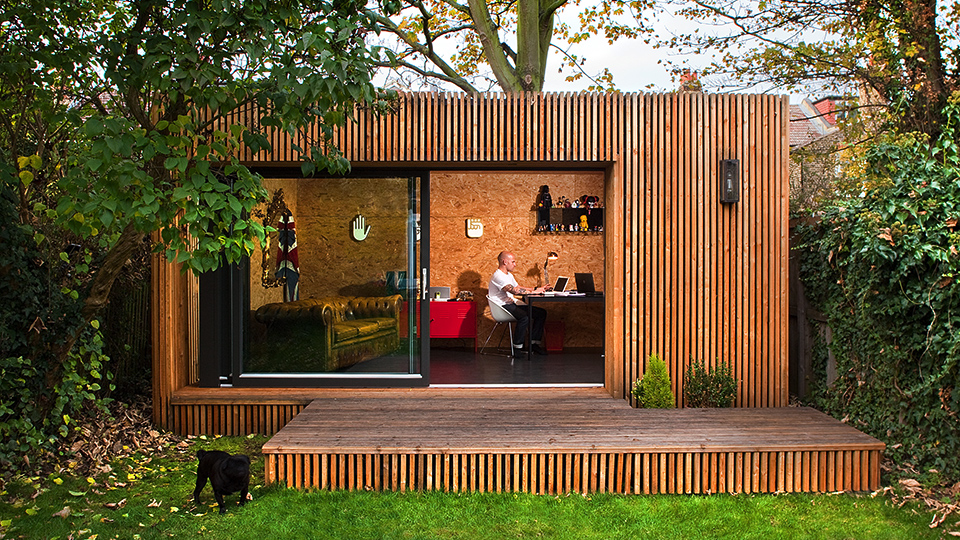Recommended News For Planning Permission For Garden Sheds
What Are The Limits On Size On Garden Rooms?When you're considering the construction of garden rooms or conservatories, outhouses garden offices, or extensions, specific size restrictions typically determine if you require planning permission. Here's a list common size criteria which may require you to seek permission to plan.
Planning permission is usually required for a detached outbuilding in the event that its total area including any outbuildings already built and the surrounding area house more than 50 percent.
Height limits
Single-story structures. The eaves' maximum height can't exceed 2.5 meters.
If the building is within 2 meters of the property boundary the height must not exceed 2.5 meters.
Floor Area:
If you don't require planning permission, but the structure you are building is floor space larger than 30 square meters and is necessary to get approval from the building regulations.
Proximity to Boundaries:
If the structure exceeds 2.5 meters high and lies within 2 meters of the line, then the building permit will be required.
Building Usage
The purpose for which you intend to use the room, even though it is not strictly a restriction on size, can influence whether or not planning permission is required. If the intended use of the space is for residential use or commercial space, planning approval is more likely required.
Permitted Development Rights:
Permitted Development Rights Permitted Development Rights are controlled by certain conditions and limits on size. The rights are based on whether the property is in a conservation area or subject to other restrictions.
Conservatories or Extensions
In general the case of a single-story extension to the rear of a detached house, maximum depth is 4 meters and for semi-detached homes or terraced houses, it's 3 meters. In the Neighbour consultation plan, these depths could be raised to 8 meters and 6 meters, respectively.
The rear extension of a one-story building must not be higher than 4 meters.
Side Extenders
The maximum height for an extension on the side must not exceed 4 meters.
Volume Restrictions:
In some areas (like conservation zones or Areas of Outstanding Natural Beauty) any addition that increases the volume of the original house by more than 10% or 50 cubic meters (whichever is more) might require planning permission.
Front Extensions:
Planning permission is usually required for extensions which extend beyond the property's original frontage facing the road.
It is essential to check the local planning authority, as rules can vary according to the local council and particular property conditions. If no planning approval is required, a building permit in accordance with the building regulations might still be needed for structural integrity or safety reasons. See the top heated garden office for site recommendations including what size garden room without planning permission, ground screws vs concrete base, myouthouse, ground screws vs concrete, garden room planning permission, outhouse building, copyright garden room, out house for garden, what size garden room without planning permission, garden room and more.

What Permissions Are Needed For Garden Rooms As Well As Other Structures Related To Neighbourhood Concerns?
Planning permission may be required for garden rooms, conservatories or outhouses. These are the most important aspects to take into consideration: Overlooking, Privacy and extensions.
Planning permits are required if a new building may result in a loss of privacy due to the view of neighboring properties. The new structure should not negatively affect the surrounding residents' living conditions.
Overshadowing, Loss of Light
Planning permission is typically required if the proposed building will create overshadowing or an extensive reduction in light to neighbouring properties. The local planning authority will decide the effect of the proposed building on sunlight and daylight in adjacent properties.
Noise and Disturbance:
Planning permission is needed if the garden room will be used to generate sound, for instance, an office at home where clients may visit an office, workshop or music room. It will ensure that the noise level are acceptable and will not disturb the surrounding area.
Visual Impact and Character
The new structure's style, size and appearance must match the character of its neighborhood. Planning permission is required in order to make sure that the proposed development is visually pleasing and does not harm the aesthetics of the neighborhood.
Boundary Proximity
Constructions that are built near the boundary of the property could require planning permission, especially when they're higher than 2.5 meters within 2 meters of the boundary. It is done to prevent conflicts and adverse impacts on neighbouring properties.
Access to shared resources as well as Rights of Way
To ensure that shared access rights of way aren't impeded or adversely affected by the construction planning permission is needed.
Oppositions by Neighbors
Planning applications are discussed with residents of the area. Planning authorities will consider concerns raised by neighbors when deciding on whether or not to grant permission.
Property values are affected by the impact of this.
While it's not the only aspect, any major changes to the surrounding homes that could affect their property values may be a factor in determining the necessity of a permit. The local authority will take into account the impact of these changes when making a decision.
Covenants and Deed Restrictions:
There may be covenants or deed restrictions on the property which require compliance regardless of planning permission. These legal agreements may determine what type of construction is allowed be allowed and not that could impact neighborhood harmony.
Construction Disturbance:
Planning permission might be granted to address issues regarding disturbances created during construction, such as noise, dust, and traffic. There may be conditions imposed on the construction project to reduce the impact it has on neighbors.
Impact on the Infrastructure
The planning approval assures that any impact to the local infrastructure is assessed and managed.
Community Consultation:
In some instances, it may be necessary to seek out a larger community especially when it comes to large or controversial projects. This allows for more democratic decision-making that takes into consideration the views of the local community.
In short, concerns about the neighborhood play a major role when deciding whether the construction of a conservatory, garden room, outhouse, garden office, or extension is accepted. Ensuring that the proposed development doesn't adversely affect the living environment and lighting, privacy, noise levels, or overall quality of the neighborhood is vital. Check with the local planning authorities at an early stage of the process to address these concerns. Have a look at the top electric cable for garden for blog advice including garden room vs extension, outhouses for garden, garden rooms brookmans park, garden office electrics, garden room, garden room planning permission, copyright garden rooms, garden room, copyright garden buildings, best heater for log cabin and more.

What Permits Do I Need For Gardens, Etc. Regarding Agricultural Lands
It is important to consider the following restrictions and planning permission requirements when you are creating a garden room conservatory, outhouse, garden office, or an extension on your agricultural property. Here are the key points: Change of use:
The land used for agriculture is usually designated for farming, and the like. Planning permission is typically required for changing the land use to gardens or residential. It is necessary to obtain planning permission since the land's agriculture will change.
Permitted Development Rights:
Land used for agriculture has typically different rights to development from residential land. For example, certain types of agricultural buildings may be erected without full planning permission, but the rights typically pertain to agriculture-related structures and not gardens or offices for residential properties.
Size and Scale
The dimensions and size will determine if planning permission is required. Planning permission is usually needed for large structures or structures covering a greater area.
The impact on the use of agriculture:
Planning permission is more likely to be required if the new structure interferes with the agricultural use of the land such as reducing the area available for crops or livestock.
Green Belt Land:
When land that is used for agriculture is designated Green Belt, additional restrictions are in place to limit urban sprawl. Typically, any building situated on Green Belt property requires planning approval and must meet specific requirements.
Design and Appearance
The design and appearance of the new structure should be in line with the rural character of the surrounding area. The permission for planning will guarantee that the structure doesn't adversely impact the natural landscape or visual amenities.
Environmental Impact:
The environmental impacts of any building on agricultural land is to be assessed. Planning permission for a new building could require a thorough environmental analysis. This is so that it does not damage the local ecosystem or wildlife.
Proximity to Existing Buildings:
The planning requirements could be impacted by the close proximity of a planned garden office or space to an existing agricultural building. Buildings that are located near farms are viewed differently from those built on open fields.
Access to Infrastructure
It is important to consider the effect of the proposed building on existing infrastructure, such as roads, waste management and water supply. Planning applications will be required to determine if the current infrastructure is adequate to support the construction.
Use Class Order
Planning law defines specific categories of land suitable for agricultural purposes. In order to comply with local policies and regulations, changing the use classes to include non-agricultural structures usually requires approval from the planning department.
Local Planning Policies
Local planning authorities have specific policies for agriculture-related land. These policies determine whether or not planning permission for non-agricultural structures is granted by taking the local development plans and the requirements of the community into consideration.
National Planning Policy Framework (NPPF):
In the UK National Planning Policy Framework is a framework that provides guidelines for land use and development. Permission to plan agricultural structures will be assessed according to NPPF which emphasizes sustainability and rural area protection.
Planning permission is needed for extensions, conservatories and outhouses as well as garden offices on agricultural land. This is because the land has to be altered to meet local and national planning policy. To determine the exact requirements and to obtain the required approvals, it is crucial that you speak with local planning authorities. Follow the recommended how to do decking on grass for more examples including copyright garden office, what is a garden room, outhouse garden, ground screws vs concrete base, garden room heater, garden rooms near me, out house, what size garden room without planning permission uk, garden room planning permission, outhouse uk and more.
